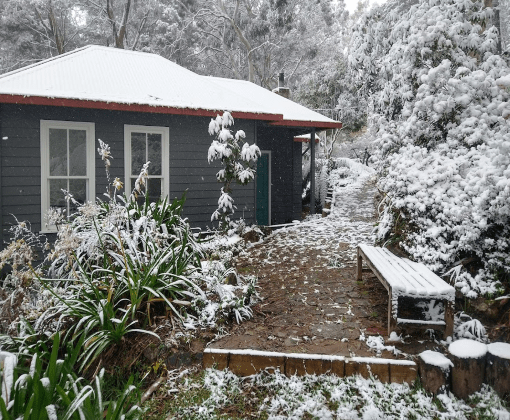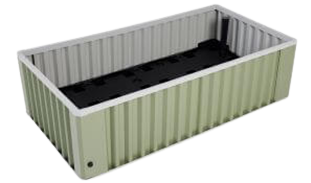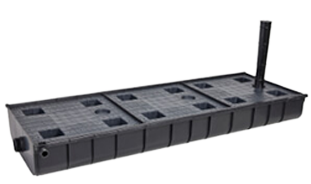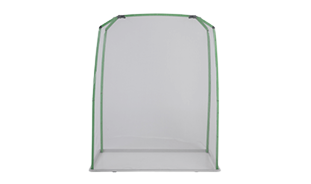Winter gardening and wicking beds
This month, I thought we would look at the challenges of winter gardening and whether having a wicking bed makes the challenges any different.
With Winter upon us and the joy of a frost covered ground to wake up to, you might find that your plants have not enjoyed the cold night as much as you have tucked up inside by the fire. Frost occurs after a clear night when the temperature dips below zero. Water vapour in the air is frozen turning into ice crystals that settle on most surfaces. Frosts won’t hurt you wicking bed but they can hurt your plants. Once frost comes into contact with a leaf, the water in the cells of plants quickly begin to freeze too, expanding in the process. The expansion of the water in the cells causes the cell walls to burst. This can result in damage or death to that plant.
Protecting against frost
To protect your plants against frost damage, there are a few things that you can do. Firstly, strong and healthy plants are better prepared to take a few hits. By regularly feeding your plants with a seaweed solution, the cell walls of the plant will thicken. A thicker wall is less likely to burst if put under pressure. Next, for your non-edibles, there are commercially available frost protection sprays. This wraps the plant in a slick polymer coating, making it harder for frost to settle on the leaves. These products are biodegradable and need to be reapplied regularly. Note, that if applying a polymer frost spray to the leaves, the plant will no longer be able to absorb the seaweed solution through its pores and the solution will need to be administered via the roots.
It is also worth remembering that a 40mm layer of mulch will help insulate the soil from massive temperature fluctuations, so it is probably worth topping up that mulch layer for winter. A good layer of mulch can prevent the rapid freezing and thawing can cause ‘frost heave’ which can damage bulbs and the shallow roots of your plants.
Some people argue that it is a good idea to empty the water reservoir in your wicking to prevent it from freezing. If I lived in Canada and parts of North America that have almost permanent winter snow cover I probably would, but it is largely unnecessary in Australia. If you do, however, live in snow prone areas try and let the water level in your reservoir drop as winter approaches.
By choosing the correct position in your garden for frost sensitive plants you can take advantage of protected areas, microclimates and residual heat from brick and stone walls. Frost is cold and heavy, meaning that it will settle into low lying areas. By placing your plants away from these dips you will avoid the worst of the frost.
Finally, once you have done all of the above, you can wrap your plants, trees, or entire garden beds in frost cloth. Frost cloth has been specifically designed for the purpose of retaining heat and trapping frost. By trapping frost, I mean that the felty surface will actually encourage frost to stick to it, rather than the leaves. This material comes in many grades depending on the severity of the frost. It’s best to remove any covering each morning, but the frost blanket material will let in between 50 and 70% sunlight, allowing you to leave it in place for a few days or weeks without causing too much ill effect.
If you don’t have, or can’t get any frost cloth, then anything from plastic sheeting to old bed sheets will do. Just keep in mind that these alternatives will defiantly need to be removed and replaced daily as they won’t let in any light and the plastic may have to opposite effect and cook your plants on a sunny winter day.
Many winter vegetables are not worried by a bit of frost, in fact, brassicas have been credited with gaining some sweetness if exposed to a few harsh nights. I know I won’t pick an orange until the first bitterly cold night. Apart from cabbage, cauliflower, kale and the other brassicas all of your onions, garlic, silverbeet and the like will laugh off the cold.
Unfortunately, some of our salad staples are not very good with a frost. Many soft herbs such as basil, coriander and parsley can really get knocked around by the frost. Lettuce and your soft leafy greens aren’t much of a match for Jack either. A great solution for growing these tender plants is to grow them in a pot or planter over Autumn and Winter. A small planter would be perfect for this, particularly if you put it on a movable base. It could then be moved around to catch the fleeting Winter Sun and tucked away at night to miss the frost.
By following these few simple steps and keeping an eye on the weather report, so you have enough time to prepare for the cold temperatures, will ensure that you the joy of a frost covered landscape is not quickly met with the disappointment of damaged crops.
Rug up and happy gardening





